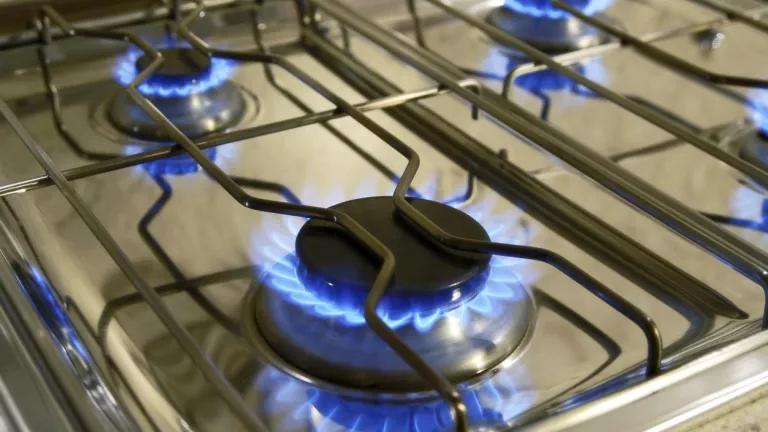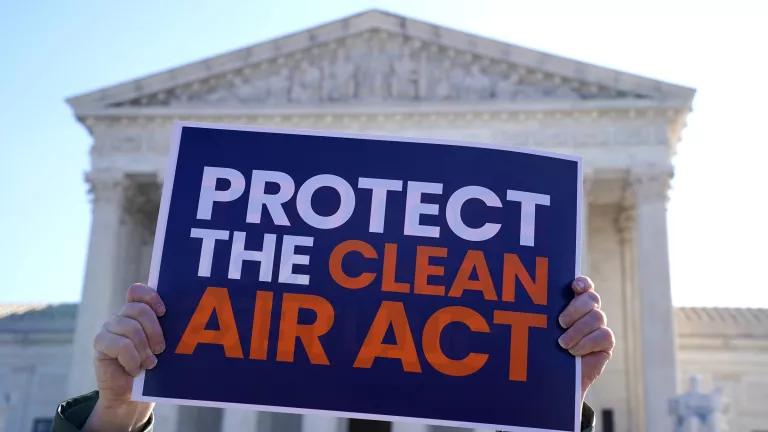Radioactive Material in the Oil and Gas Industry
Oil and gas extraction activities, including fracking, drilling, and production, can release radioactive materials that endanger workers, nearby communities, and the environment.

An aerial view of frack pad site in Jefferson County, Ohio, in November 2020
Oil and gas extraction activities, including fracking, drilling, and production, can release radioactive materials that endanger workers, nearby communities, and the environment. Radioactive elements are naturally present in many soils and rock formations, as well as in the water that flows through them. Oil and gas exploration and production (E&P) activities can expose significant quantities of these radioactive materials to the environment.
The radioactive material unearthed during oil and gas E&P is known as “naturally occurring radioactive material,” or NORM. When it has been concentrated or exposed to the environment by industrial activity, it’s called “technologically enhanced” NORM, or TENORM. In our new report, A Hot Fracking Mess: How Weak Regulation of Oil and Gas Production Leads to Radioactive Waste in our Water, Air and Communities, we reviewed TENORM in the oil and gas industry, how it is released into the environment, and how it is regulated (or not) at the federal and state levels.
TENORM in the environment from oil and gas E&P
Throughout the oil and gas development process, radioactive material can enter the environment both accidentally and intentionally. During production, equipment such as compressors, pumps, and pipes may be exposed to radioactive material. The waste management process also presents many opportunities for radiation to be accidentally released, such as in spillage or leakage of waste in transit or from the pits, tanks, or landfills where it is stored. Additionally, wastewater and equipment may be brought to facilities to be processed for reuse, sometimes in other drilling or fracking operations. There are also reuse methods that intentionally reintroduce radioactive material into the environment, such as road spreading, in which wastewater is sprayed onto roads for dust suppression or deicing. Another form of intentional reintroduction is the use of so-called land farming, a waste-management approach in which industrial waste, such as oil and gas drill cuttings, is mixed with microbes that help break down contaminants and then mixed with soil. If these wastes are not properly managed, they can potentially present unacceptably high human health risks.
Health risk from radiation in oil and gas waste
When it comes to oil and gas exploration and production, the greatest radiation health risk is cancer due to exposure to Radium-226 and Radium-228. Underground oil and gas reservoirs often contain elevated levels of radioactive materials in comparison with that found aboveground, mostly Radium-226 and Radium-228. Once drilling begins, radioactive materials that would have otherwise been confined beneath the surface can be released into the air, onto land, or into surface water or groundwater. As they become concentrated, it leads to environmental contamination and can accumulate in people’s bodies.
Radium-226 and Radium-228 can cause health effects that depend on levels of exposure. Most epidemiological data come from studies of radium watch dial painters, radium chemists, and technicians exposed through medical procedures in the early 1900s. These studies, as well as studies on experimental animals, indicate that chronic exposure to radium can induce cancer.
Unnecessary exposure to Radium-226 and Radium-228, both present in many forms of oil and gas waste, will increase the risk of cancer. Radium also decays into radon isotopes and, when inhaled, deposit radiation in lungs, causing lung cancer. In fact, radon is the second-leading cause of lung cancer in the U. S. Radon decay products, including lead-210 and polonium-210, are also present in high levels in gas handling equipment and can further contribute to cancer risk.
Improper disposal of oil and gas waste can spread unnecessary exposure to radiation far beyond oil and gas site workers and into surrounding communities. Without proper regulation of this waste, unsafe management and disposal practices will persist, workers will continue to be unnecessarily exposed to radiation, and communities living nearby will continue to face health risks from unregulated radioactive material. My colleague Amy Mall details the regulatory gaps in oil and gas TENORM management here.




